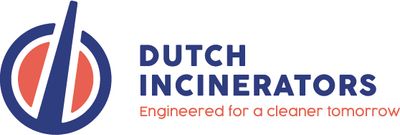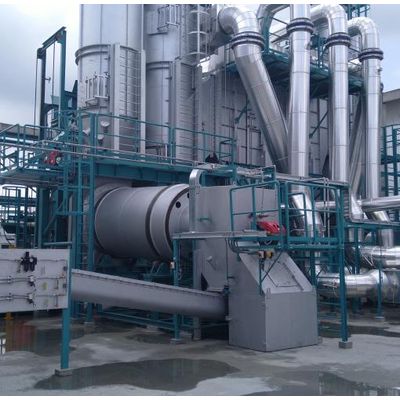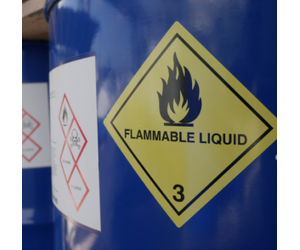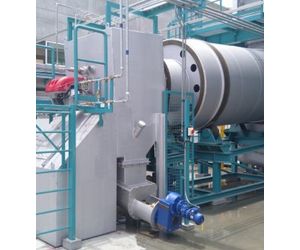

- Home
- Companies
- Dutch Incinerators BV (DI)
- Products
- Dutch Incinerators - Stationary Rotary ...

Dutch Incinerators - Stationary Rotary Kiln Incinerator
Direct fired rotary kiln incineration technology has been proven to be the best available high temperature thermal treatment technique for small and medium scale hazardous waste disposal requirements.
Counter-current rotary kiln incineration has become Dutch Incinerators preferred thermal treatment solution for consistent and safe destruction of practically all combustible hazardous wastes, as listed in the European Waste Catalogue (EWC codes).
All our incinerators are fully automated systems, designed for continuous 24/7 operation, with limited manpower requirement and low operational cost.
In addition, we have built-in unique design features to avoid fouling, slag agglomeration, clogging, corrosion and unscheduled premature system shutdowns.
The installation of our rotary kiln incinerator together with our waste shredding & pumping system solves many pre-treatment challenges.
Our incinerators are designed and built in accordance with established process guidelines, health & safety regulations and environmental & pollution control standards.
All our thermal waste treatment plants are designed and constructed in accordance with the applicable guidelines, standards, directives, regulations and shall comply with any specific country and local legislation, including domestic air emission and clean air level values.
IED
The EU Industrial Emission Directive 2010/75/EU (IED) is the key Directive that covers almost all regulation of waste incineration. We have adopted this EU Directive for our incinerator designs.
BATC
For hazardous waste incineration plants with a throughput capacity larger than 10 ton/day, we comply with the latest EU Waste Incineration BAT Conclusions (BATC), as published in the EU Official Journal on December 3rd 2019.
If required, we can meet Waste Heat Recovery (WHR) BAT R1 criteria.
EPA / CEPA
Our treatment systems can be designed in full compliance with the U.S. Environmental Protection Agency (EPA) and the Canadian Environmental Protection Agency (CEPA) rules and standards that protect the environment and control pollution.
CE / UKCA / UKNI
Dutch Incinerators affirms that its thermal waste treatment plants have been assessed and deemed to be in conformity with CE and UKCA/UKNI health, safety and environmental protection standards.
DI offers a standard product range with thermal input capacity between 1.5MW and 20MW, but we can design any capacity according to the client’s requirements.
The final incinerator model is mainly defined by the selected feeding equipment, energy recovery preference and single or dual flue gas treatment system (dry and/or wet scrubber), together with other design details.
The engineering basis of our rotary kiln systems is the overall thermal input capacity, based on the waste Higher Calorific Value (HCV). Throughput (in kg/hour) is directly related to the waste HCV, meaning that low calorific waste input results in a higher throughput and vice versa, high calorific waste has a lower throughput volume.
Both, the waste HCV and throughput requirement are decisive for sizing the thermal input capacity of the incinerator system.

- Compliance with any incineration directive and local environmental emission standard.
- No requirement for continuous diesel or gas supply to the burner, except to start the combustion process once a year (typically approximately 5 hours of diesel per annum).
- Waste-to-Energy options can be integrated in the turnkey thermal waste treatment design.
- Guaranteed plant availability of minimum 8,000 hours per year (= 91.3% uptime).

Dutch Incinerators’ stationary counter-current rotary kiln design is a robust, stable and reliable thermal treatment structure, based on excess air thermal waste oxidation, at well controlled combustion conditions. Our incinerator systems are engineered to accept and process the most problematic heterogeneous waste mixtures; meanwhile insuring a stable operation within the applicable operational permits.
DI’s waste feeding systems are capable to accept large variations in feedstock particle sizes, physical properties, chemical composition and calorific value.
Adaptable feed design options to the incinerator are available, to process organic, inorganic, solids, dust, gases, liquids, semi-liquids, emulsions, pastes, slurries, sludges, wastewater, big and small, wet and dry, lumpy and uniform, high and low calorific value wastes.
The Waste Heat Energy Recovery system can be designed in accordance with customer requirements. Available options are: hot air, hot water, chilled water, steam, electricity and heat export.
Flue gas treatment system(s) to control the air emissions are in line with latest applicable standards. For hazardous waste treatment, we recommend a combination of dry and wet scrubbing.
